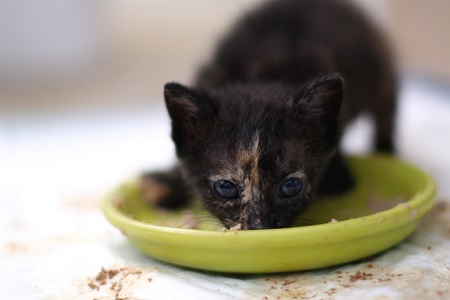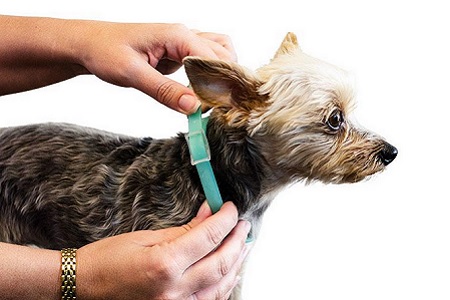The kitten, regardless of size, is not a small cat, but the cat's baby. Precisely for this reason, it is very important to be able to understand that the kitten's organism is different from an adult cat, and consequently also has its specific needs. The fundamental aspect on which this concept must be applied is above all that of nutrition.
So let's see what his nutritional needs are and what the kitten's diet should be based on.
The kitten’s body
The kitten, as we said before, does not have the same physical characteristics as an adult cat.
- Stomach: the proportions of the stomach of the two animals are very different. The kitten has a very small digestive system, so it will need smaller rations, but well divided over the course of the day;
- Intestine: the intestine of the kitten, especially if it is still very small, is structured to follow the digestion of mother's milk only. Only after 4 weeks of age it will begin to undergo changes that will allow it to digest some foods offered by the mother. Despite this, it is still very delicate, so giving the kitten adults foods could cause diarrhoea and indigestion;
- Nutrients: kittens grow very quickly and to do so the body needs a lot of calories and nutrients. For example, a kitten is like a house which is still under construction, while the adult cat is a building that needs to be often renovated. To be able to build a house from scratch, you need money, bricks, concrete, plants and everything else. On the other hand, to renovate, the money and materials needed are much lower. Similarly, in order to guarantee the right growth to the kitten, much more calories and nutrients will be needed;
- Teeth: Kittens, just like babies, are born without teeth. It is only from the second week that the first milk teeth begin to appear, to complete the non-definitive teething around 50-60 days of age. Permanent teeth, on the other hand, do not appear before 6 months. For this reason, the specific food for kittens must also be very easy to chew, with smaller and softer kibble, adapted to the mouth and teeth of the kitten.
Weaning
Weaning, i.e. the transition from mother's milk to solid and wet food, should occur no earlier than 40 days after birth.
If you have found a very small kitten or your cat has just given birth, you will need to do the weaning yourself.
The ideal period to progressively start replacing breast milk is from 4 weeks of age, to be completed around 7-8 weeks of age. Maternal feeding, in fact, is essential only for the first month of life, because it helps the baby to grow and develop the first immune defenses.
Weaning too early can harm the kitten, which would feel stimulated to refuse mother's milk and start to prefer the food you want to offer him, causing gastrointestinal problems and an increased susceptibility to infections.
A delayed weaning beyond two months of age, on the other hand, would lead to serious nutritional deficiencies in the kitten. Breast milk begins to run low and is no longer sufficient to guarantee the right nutrients necessary for the baby's growth.
Weaning must begin with a liquid or semi-solid food. For very small kittens, you can opt for a specific type of food, usually included in the “babycat” category. After 7-8 weeks, on the other hand, you can already start with a “kitten” type food.
Dilute one tablespoon of wet food with two teaspoons of warm plain water. Mix well and offer the food to the kitten. At this age, the little ones need to eat little and often, so you should feed them at least 5-6 times a day with small rations.
As the kitten grows, you can invert the proportions between water and the wet food until you can completely eliminate the water from the paste, which you will still have available in a separate bowl for the kitten to drink when they want.
Once the kitten has its final teeth ready (usually no earlier than 50 days) you can also give it dry food. Choose a good quality type of food that is specific for kittens. For the first period, you can moisten the croquettes with warm water, in order to make them softer.

The baby food
Once the weaning is complete, and the kitten has learned to eat the food you offer instead of breast milk, you will need to continue feeding it with special attention.
Always leave a bowl with fresh water and a bowl with dry food available. Kittens, when they are small and when they grow up, must eat often. Make sure he can always have the dry food available, but supplement them with wet food 1-2 times a day.
For the right doses, ask your veterinarian for advice, who will be able to establish them based on the growth and health of the kitten.
In any case, the food, whether it is wet or dry, must be specific for kittens even after weaning. Kittens must grow up healthily, so they need a food that contains everything they need and, above all, in the right proportions.
The quality of the food provided is an indispensable factor.
Most low-quality foods contains very little meat, compared to flours and cereals which are in greater quantities. The cat is a carnivore in the strictest sense of the word, so it needs a lot of proteins.
Meat has its own cost, as does the integration of vitamins and mineral salts necessary to define a complete meal.
Kitten health must come first. Think about it, what would happen if you feed your child bread and water every day?

















